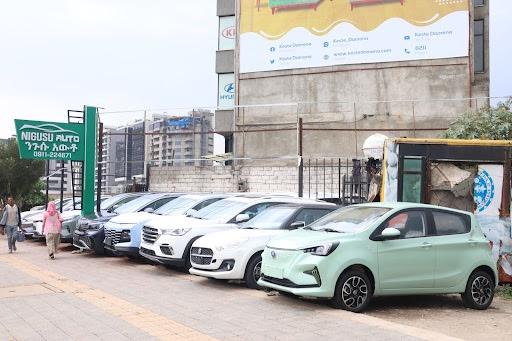The News
ADDIS ABABA — Ethiopia inaugurated its biggest electric vehicle factory in Debre Berhan in the Amhara region on Tuesday, as part of an ambitious strategy to turn the country into a leading player in green mobility on the continent.
But this latest development comes as the Ethiopian government faces economic challenges and limited financial capacity that has delayed the completion of government priority projects scattered around the country. This includes the $5 billion Grand Renaissance Dam, which would help upgrade the electricity network needed to power a rising influx of EVs.
With the Horn of Africa nation facing a large economic deficit, skeptics are questioning if Ethiopia has the capability or the resources to execute such an ambitious project. Addis Ababa is displacing citizens and gutting neighborhoods to pave the way for skyscrapers and EV charging stations, part of an effort to make the capital “The East African Dubai.”
In this article:
Know More
Ethiopia’s 10-year Perspective Development Plan calls on the government to import 4,800 electric buses and 148,000 electric cars. Last year, Ethiopia banned the import of non-electric cars and offered a new tax exemption for the import of electric cars as part of a green legacy project initiated by Prime Minister Abiy Ahmed.
The local automobile market is currently saturated with Chinese imported electric vehicles, with Chinese brands such as BYD and Jetour gaining popularity.
The Ethiopian Ministry of Transport announced last month that it had managed to bring in more than 100,000 electric cars and built 60 charging stations across the capital.
The new factory was built by a local entrepreneur, Belayneh Kinde, at a cost of more than $52 million. It is expected to produce around 1,000 cars a year.
It is not the first of its kind in Ethiopia. In 2020, Ethiopian businessman and Olympian Haile Gebreselassie started an assembly plant to produce electric cars locally for the first time in partnership with South Korea’s Hyundai motor company. However, the partner fizzled within a year after it faced constant shortages of foreign currency to import needed raw materials.
Samuel’s view
The right idea is perhaps being implemented at the wrong time, given all the other challenges Ethiopia is facing.
Solomon Assefa, an analyst, sees many positive aspects to such a plan but is skeptical about the speed of accomplishing it. “While it eventually is a worthwhile policy direction to transition to electric vehicles, the transition needs to be staggered,” he said. “Our current energy infrastructure is not ready to support hundreds of thousands of electric vehicles added to the grid yearly.”
Ethiopia is currently grappling with conflicts in the Amhara region, a breadbasket region with a crippled economy due to the war. A new report estimates the conflict recovery from the two-year Tigray war requires more than $44 billion.
The nation is having a hard time obtaining loans from the International Monetary Fund and is contemplating a number of choices, including devaluing its local currency to generate scarce foreign currency.
Ultimately, the Ethiopian government’s goal is to save on dwindling foreign currency, as it has been spending more than $6 billion a year to subsidize imported fuel for motorists and has been slowly removing its subsidy programs for the last two years.
Room for Disagreement
Sam Rosmarin, an American entrepreneur and policy advisor based in Addis Ababa, believes such initiatives herald multiple benefits for Ethiopia. “Increasing the number of electric cars is an excellent way to decrease Ethiopia’s dependence on imported petroleum, as well as reducing pollution in Addis Ababa from car exhaust fumes,” Rosmarin told Semafor Africa. And, he said, “it helps the nation become less reliant on spare parts, since EV’s are generally lower maintenance and have cheaper operating costs for public transport when electric buses are used.”


